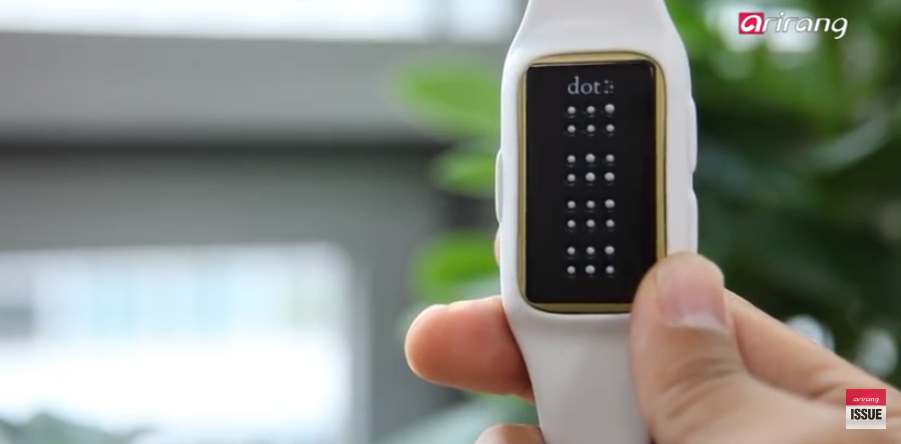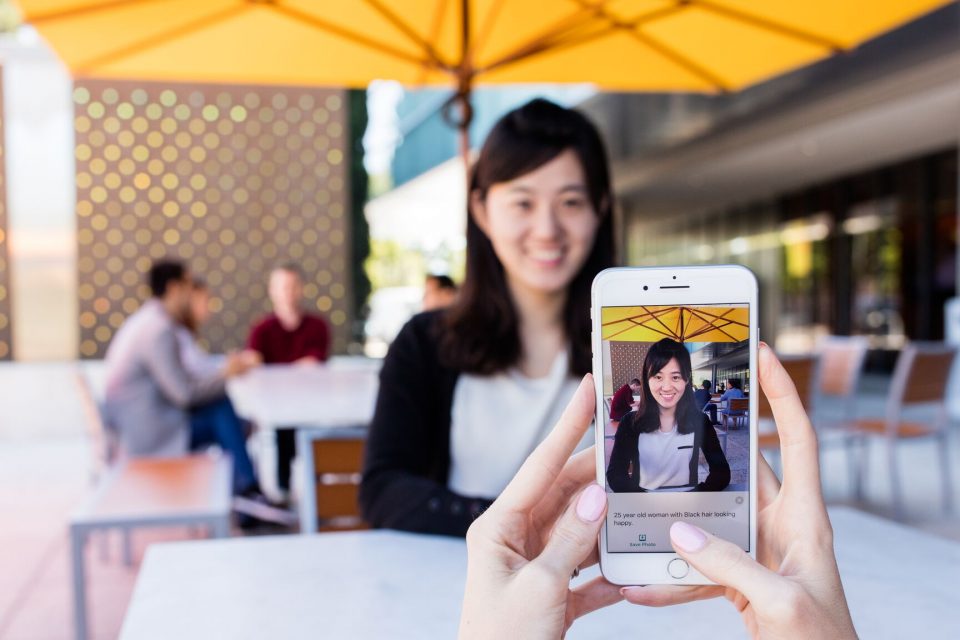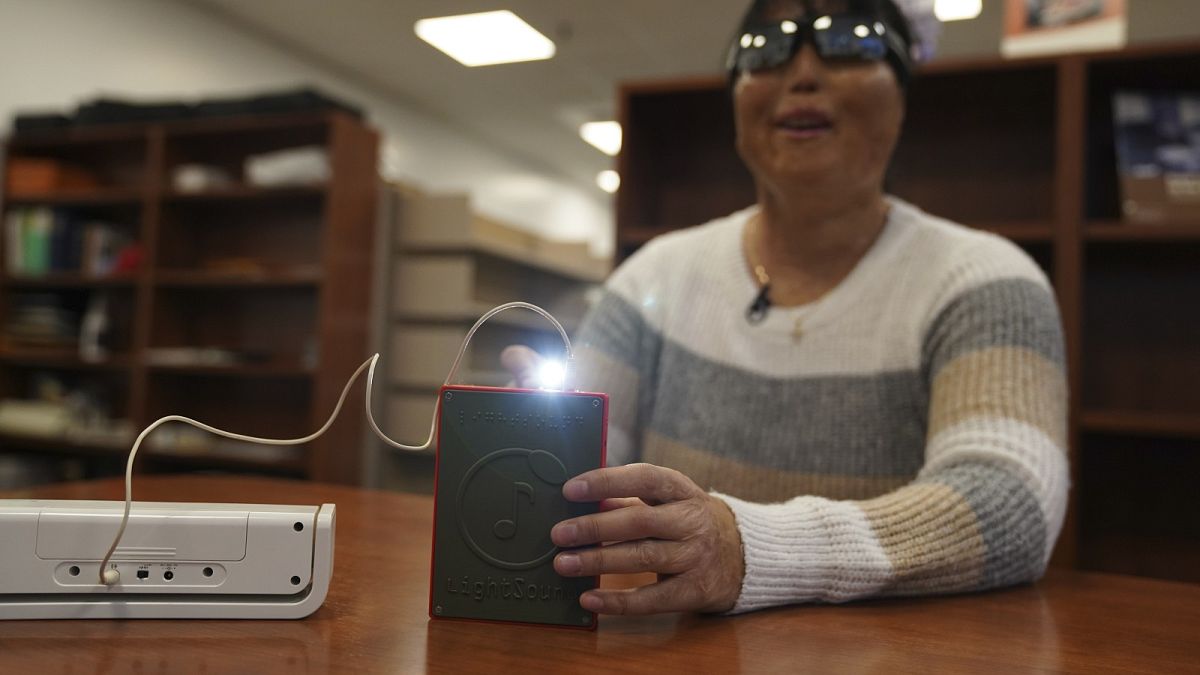Voice-Activated Assistive Devices: Simplifying Everyday Tasks
Voice-Activated Assistive Devices: Simplifying Everyday Tasks
Blog Article
Discover Cutting-edge Devices Developed for the Visually Damaged
The development of innovative devices for the visually damaged represents a considerable innovation in availability and self-reliance. Technologies such as clever glasses with AI capacities and mobile applications developed to provide auditory summaries are reshaping everyday experiences for users. Furthermore, wearable gadgets that employ haptic comments improve environmental recognition, while modern Braille technologies use new methods to engage with text. As these tools remain to develop, their effect on the lives of those with visual problems elevates vital concerns concerning the future of inclusivity and freedom in different elements of life. What exists ahead in this technical landscape?
Smart Glasses for Navigation

Smart glasses made for navigation are reinventing the method aesthetically impaired people engage with their environment. These advanced devices utilize a combination of electronic camera modern technology, man-made knowledge, and auditory responses to provide real-time details regarding environments. By using challenge detection systems, smart glasses can signal individuals to potential hazards, making it possible for safer mobility in both acquainted and unknown settings.
The integration of GPS innovation better improves navigation abilities, permitting customers to receive auditory instructions as they relocate. This hands-free technique not just fosters freedom however additionally empowers visually impaired people to browse metropolitan landscapes with raised confidence. Additionally, lots of clever glasses are equipped with attributes that identify sites and street signs, offering contextual information that enhances the individual experience.
In addition, the advancement of these devices is continuously progressing, with business functioning to boost the accuracy of object recognition and broaden the series of navigational attributes. As smart glasses end up being much more obtainable and inexpensive, they hold the potential to substantially change every day life for visually damaged users. Ultimately, these ingenious devices stand for a crucial action toward inclusivity, offering enhanced movement and a better sense of autonomy for people navigating the world around them.

Mobile Apps for Daily Living
How can mobile applications boost the every day lives of visually damaged people? Mobile applications are changing the means aesthetically impaired customers navigate their atmospheres, manage day-to-day jobs, and accessibility info. These applications give vital support via various performances, fostering self-reliance and boosting lifestyle.
Several ingenious mobile applications are designed especially for day-to-day living. As an example, applications like Be My Eyes attach aesthetically impaired users with sighted volunteers through video calls, allowing them to obtain real-time support with tasks such as checking out labels or navigating unknown rooms. Seeing AI, established by Microsoft, uses man-made knowledge to explain surroundings, reviewed text, and determine things, effectively changing a mobile phone right into an effective tool for everyday aid.
Additionally, navigating applications tailored for the aesthetically damaged, such as Aira and BlindSquare, offer audio-based directions and ecological details, enabling individuals to traverse their environments safely and confidently. Past navigation and immediate support, mobile applications also sustain company and task monitoring, with features that assist customers establish reminders, produce order of business, and track appointments. In summary, mobile applications work as important resources, empowering aesthetically damaged individuals to lead more independent and meeting lives.
Wearable Technologies for Aid
Empowerment via innovation is increasingly apparent in the realm of wearable devices created to assist visually damaged individuals. These ingenious tools incorporate seamlessly right into day-to-day live, enhancing navigation and offering vital responses to users. Wise glasses geared up with electronic cameras can read and recognize faces message out loud, enabling users to communicate more confidently in social and professional setups.
An additional noteworthy improvement is using haptic feedback systems in wearable tools. These systems make use of vibrations or other responsive signals to share details concerning the individual's atmosphere, such as barriers or modifications in surface, improving mobility and safety and security. Wearable technologies also consist of wristbands that connect to smartphones, informing individuals to alerts via refined vibrations, thus enhancing connectivity without reliance on aesthetic signs.
As these innovations proceed to develop, they are not only improving self-reliance for aesthetically damaged individuals but likewise fostering a higher feeling of incorporation in culture. By connecting the gap between challenges faced in day-to-day living and the capacity for freedom, wearable modern technologies work as pivotal devices in the mission for equal rights and empowerment for those with aesthetic disabilities.
Audio Summary Devices
Audio summary tools play a crucial duty in improving ease of access for visually impaired individuals, providing them with the ability to involve with visual media. AI-powered visual aids. These tools use narrated summaries of crucial visual components in movies, tv shows, and live performances, guaranteeing that individuals can totally understand the context and emotions conveyed with visuals
Sound description can be integrated into numerous platforms, including streaming solutions, movie theater testings, and live cinema. Many preferred streaming services now include audio description as an availability function, permitting audiences to select it conveniently. Along get redirected here with mainstream media, specialized applications additionally exist, providing audio summaries for art exhibitions, galleries, and various other cultural occasions.
The efficiency of audio summary depends upon the ability of the storytellers, who should share visual details succinctly without taking away from the initial audio. Advancements in this area are likewise paving the way for even more tailored experiences, where individuals can adjust the level of detail and pacing according to their choices.
Braille Innovations and Instruments
Braille gadgets and innovations have dramatically changed the way aesthetically damaged individuals engage with message and information. Modern developments have brought about the advancement of flexible tools that enhance proficiency and freedom among individuals. Especially, Braille show innovations have actually evolved, permitting vibrant reading experiences. These gadgets convert electronic text into Braille, enabling users to access a huge array of check my source information on tablets, computer systems, and smartphones.
Moreover, portable Braille notetakers combine conventional Braille input with modern-day capabilities, helping with note-taking, scheduling, and document editing and enhancing on the move. Braille displays and notetakers. These compact tools commonly feature text-to-speech capabilities, linking the space between Braille and acoustic information
On top of that, innovative Braille printers have actually emerged, permitting individuals to produce Braille tags, files, and educational products effectively. This accessibility cultivates greater participation in professional and educational atmospheres, ultimately promoting inclusivity.
Furthermore, study into clever Braille technologies continues to broaden. Gadgets that incorporate expert system are being explored to give real-time navigating help and contextual info, improving the individual experience in diverse setups. In general, these technologies show a dedication to equipping aesthetically damaged people with innovation, guaranteeing they can easily gain access to and involve with the world glasses frames for women around them.

Final Thought
The innovation of innovative tools for the aesthetically impaired substantially improves self-reliance and top quality of life. These modern technologies not only foster greater inclusion however also promote autonomy in daily tasks, inevitably contributing to a much more equitable and available society for visually damaged individuals.
As smart glasses become a lot more accessible and cost effective, they hold the potential to substantially change everyday life for aesthetically damaged users. Mobile applications are changing the means visually damaged users browse their environments, handle day-to-day tasks, and accessibility details. Applications like Be My Eyes link visually damaged customers with sighted volunteers using video clip telephone calls, permitting them to receive real-time aid with tasks such as checking out labels or navigating unfamiliar areas.In addition, navigation apps customized for the visually impaired, such as Aira and BlindSquare, offer audio-based directions and ecological info, allowing individuals to traverse their surroundings securely and confidently.The advancement of ingenious devices for the aesthetically impaired substantially boosts freedom and top quality of life.
Report this page